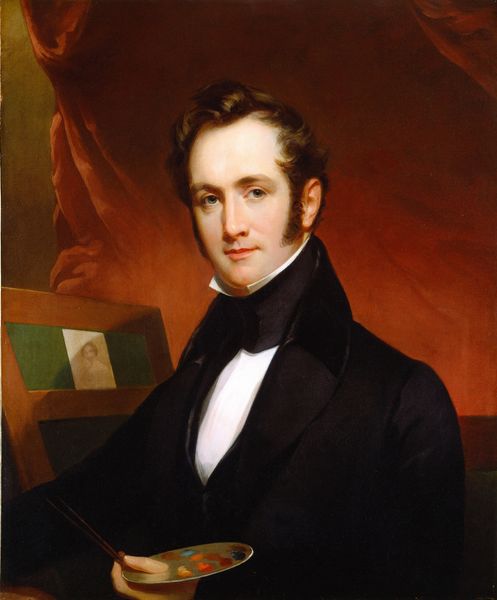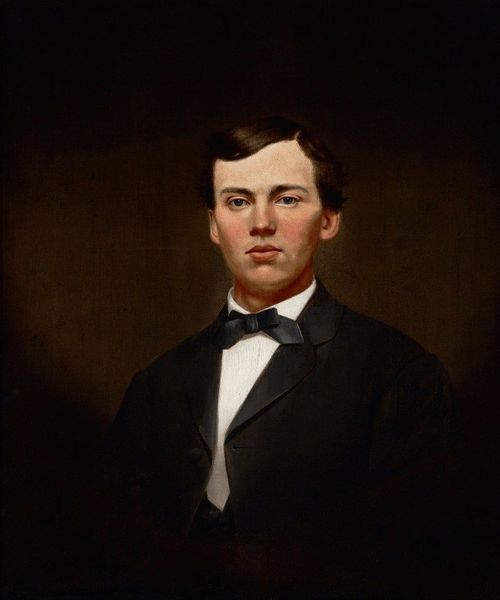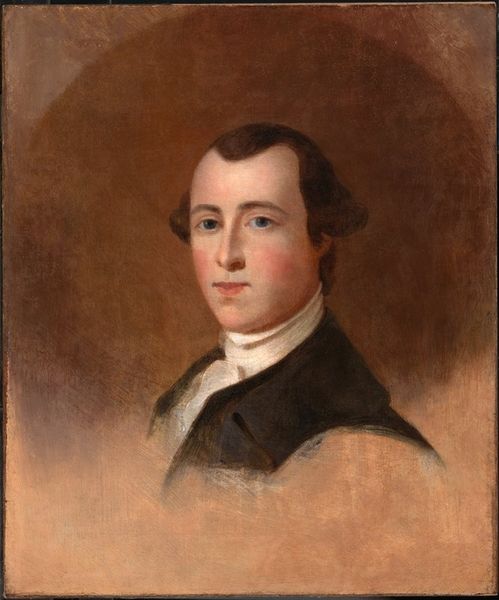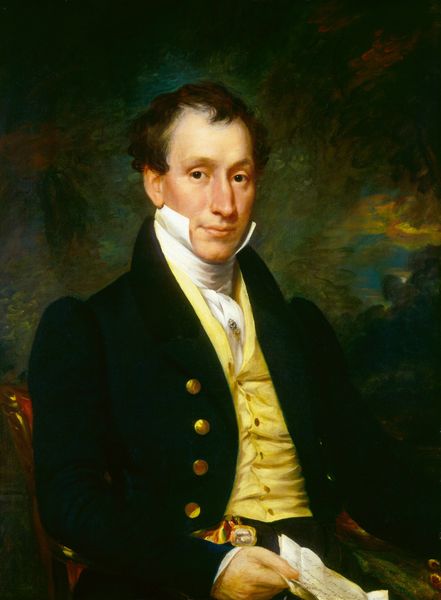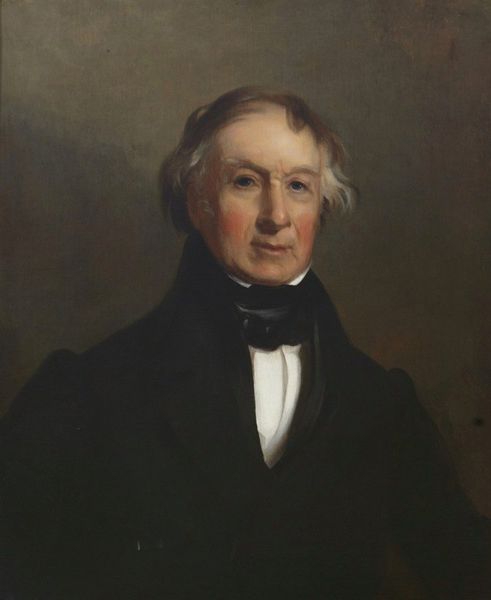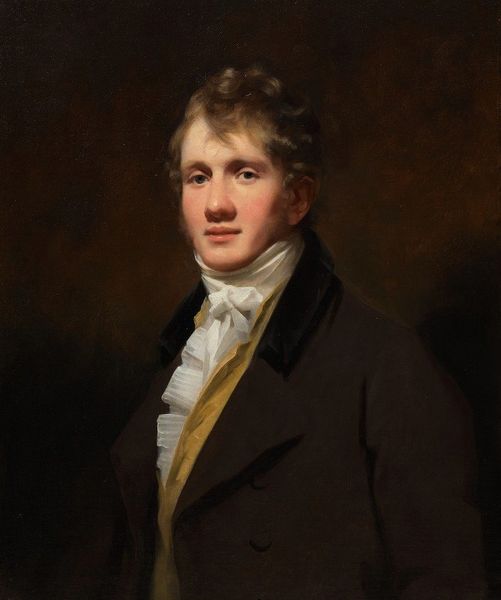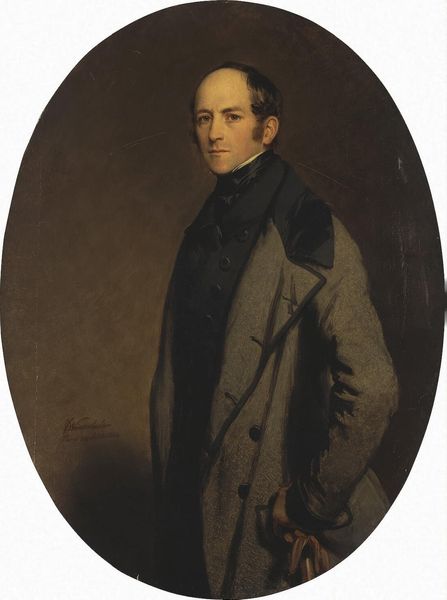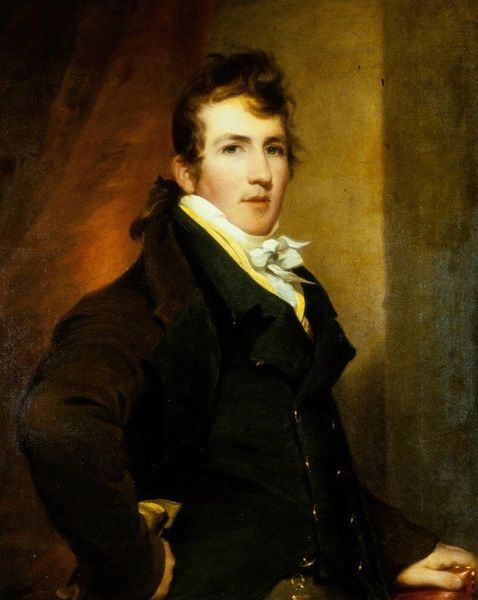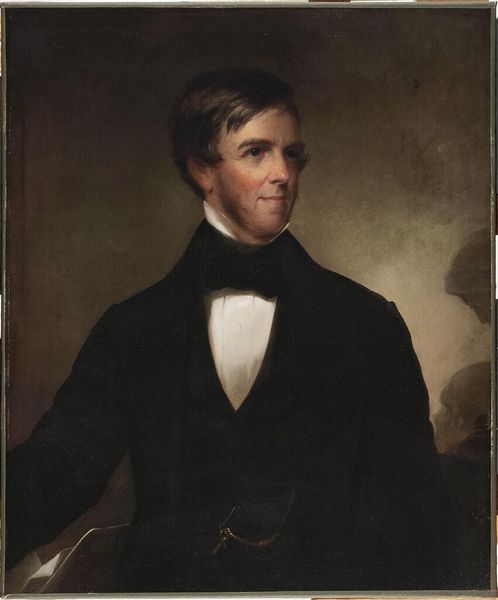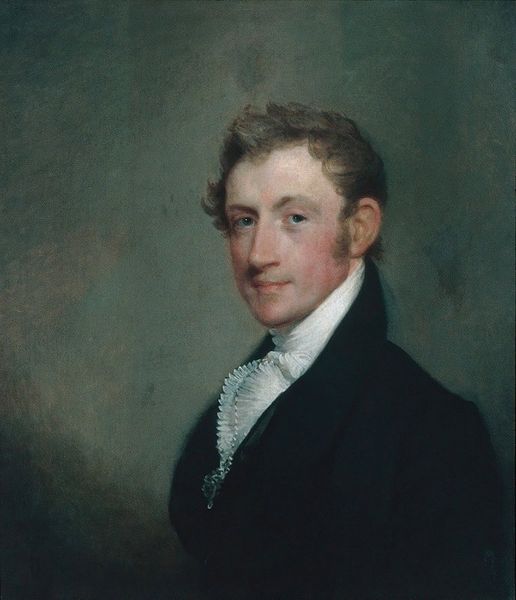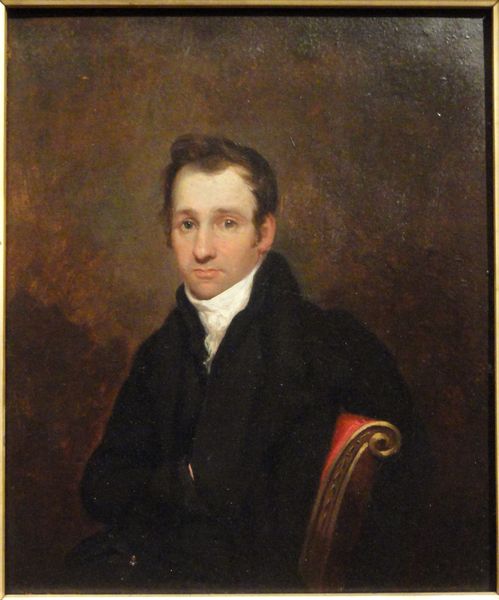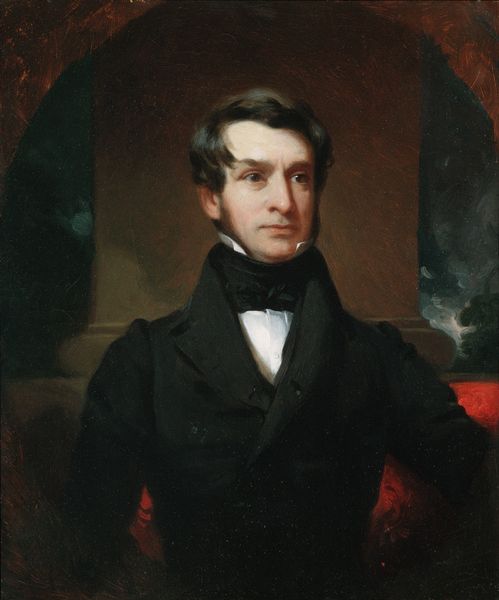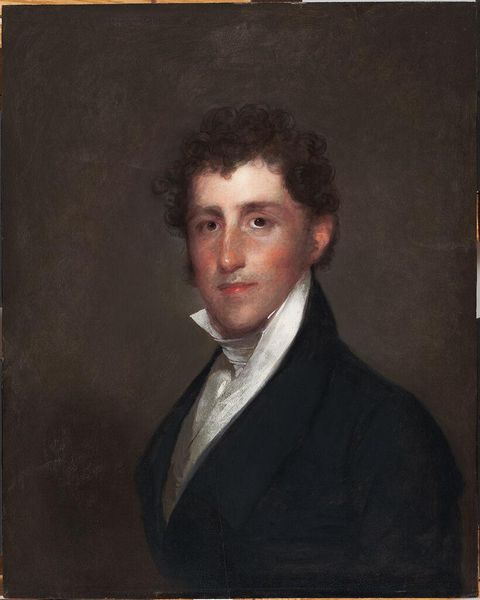
painting, oil-paint
#
portrait
#
portrait
#
painting
#
oil-paint
#
romanticism
#
academic-art
#
realism
Copyright: Public Domain: Artvee
Editor: This is Thomas Sully's portrait of Jacob S. Snider, Jr., painted between 1835 and 1840. The muted color palette and slightly unfinished quality create a somber and reflective mood. What resonates with you most when you look at this piece? Curator: What strikes me is the carefully constructed visual language around identity in this period. The sitter's dark clothing against the light background emphasizes a particular kind of restrained masculinity that was coming into fashion. But how much does the painting reveal of his inner life, and how much is performative, conforming to societal expectations? Editor: That’s interesting. It feels like he's presenting a certain image of himself, almost like a mask. Do you see any specific symbols that reinforce that idea? Curator: Yes, the precise cut of his coat, the meticulous grooming—they are all symbols of control and status. This contrasts with the softening of features in romanticism painting and how Sully suggests a complex psyche behind a conventional pose. Do you think that contrast intentional? Editor: Possibly! He almost looks like he’s caught between these rigid expectations and maybe some internal vulnerability. How might someone viewing this painting at the time respond differently than we do today? Curator: Back then, the focus might have been more on lineage and social standing, as confirmed through the realistic detail and classical composition. Today, we might read more into the subject's expression, looking for nuances of individuality or subversion that were probably not considered as much in his day. The way the cultural memory of masculinity shapes our perception of the symbols in the painting has certainly shifted over time. Editor: So, our contemporary understanding adds another layer to the image itself. I appreciate that. Thanks for sharing! Curator: My pleasure. Thinking about how different generations perceive and interpret visual cues, it opens a richer discourse around art and history.
Comments
No comments
Be the first to comment and join the conversation on the ultimate creative platform.
